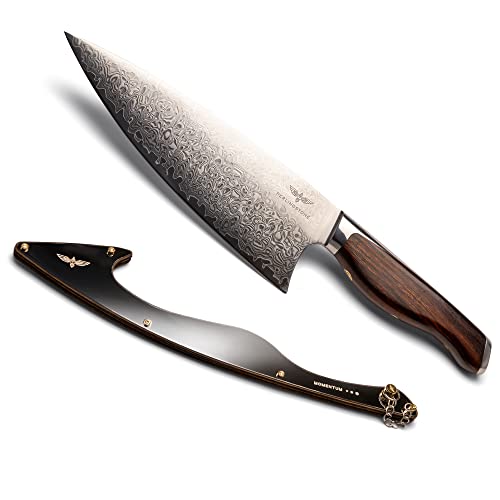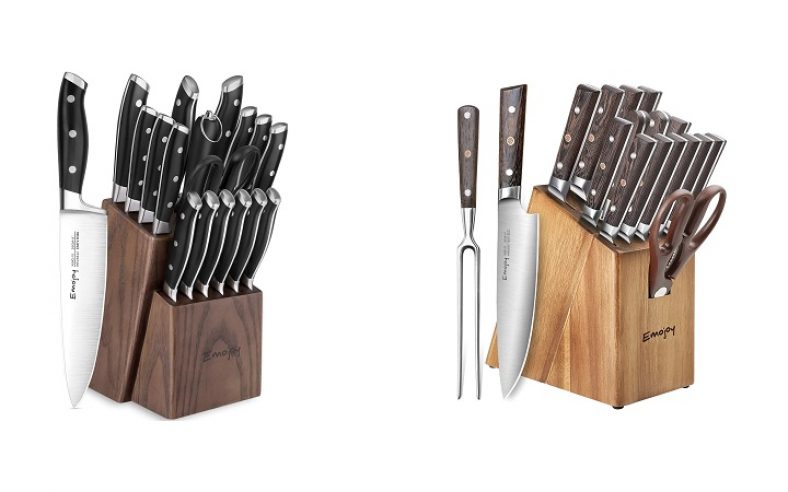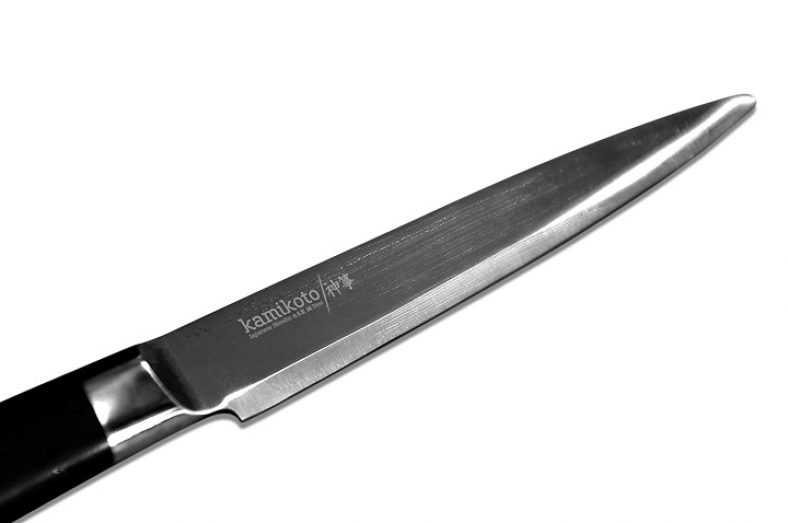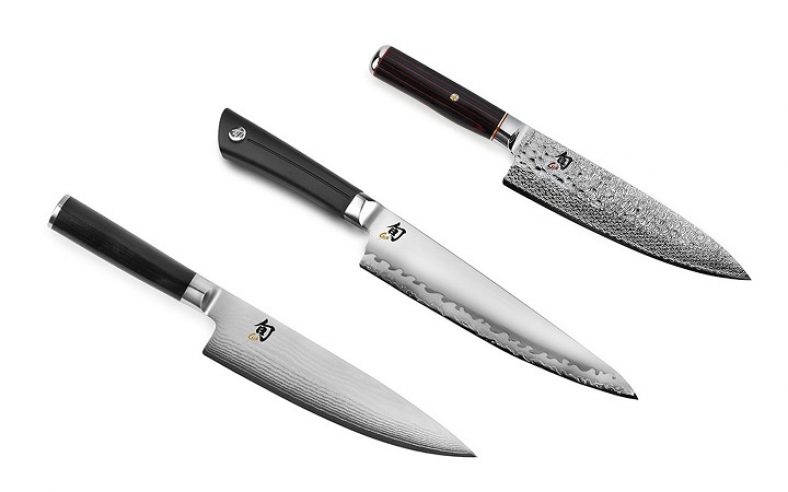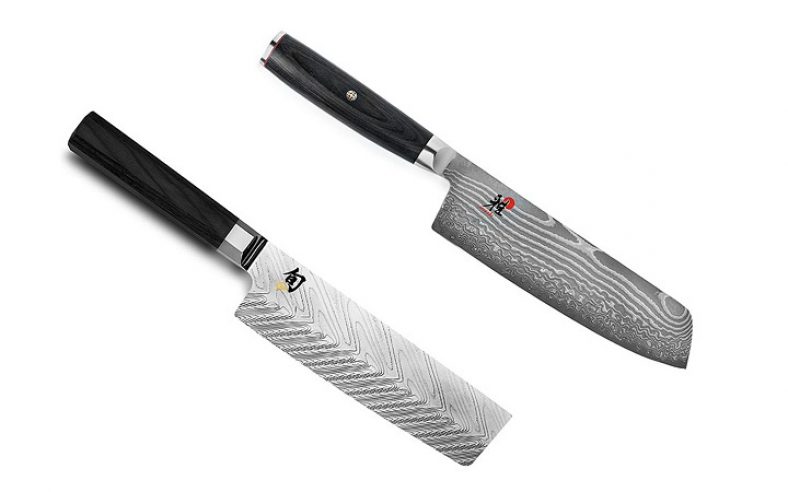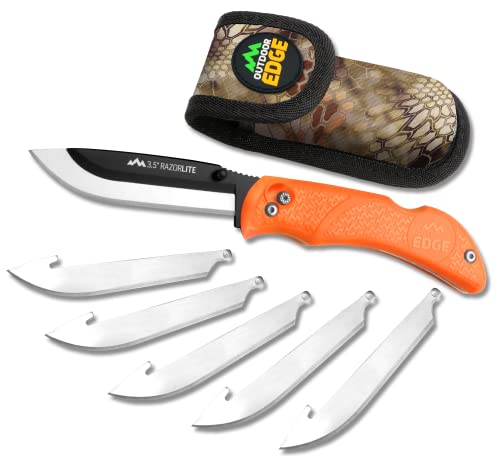The best kitchen knives are the ones that suit your needs and budget. There is no one-size-fits-all answer to this question as everyone has different preferences and requirements when it comes to cooking.
A good set of kitchen knives is an essential part of any home cook’s arsenal. Whether you are a professional chef or a beginner, having the right knives can make all the difference in your cooking experience. In this article, we will take a closer look at the different types of kitchen knives available in the market, their uses, and what to look for when buying them.
We will also provide some recommendations for the best kitchen knives based on customer reviews and expert opinions. So, let’s get started and find the perfect set of knives to suit your cooking needs.
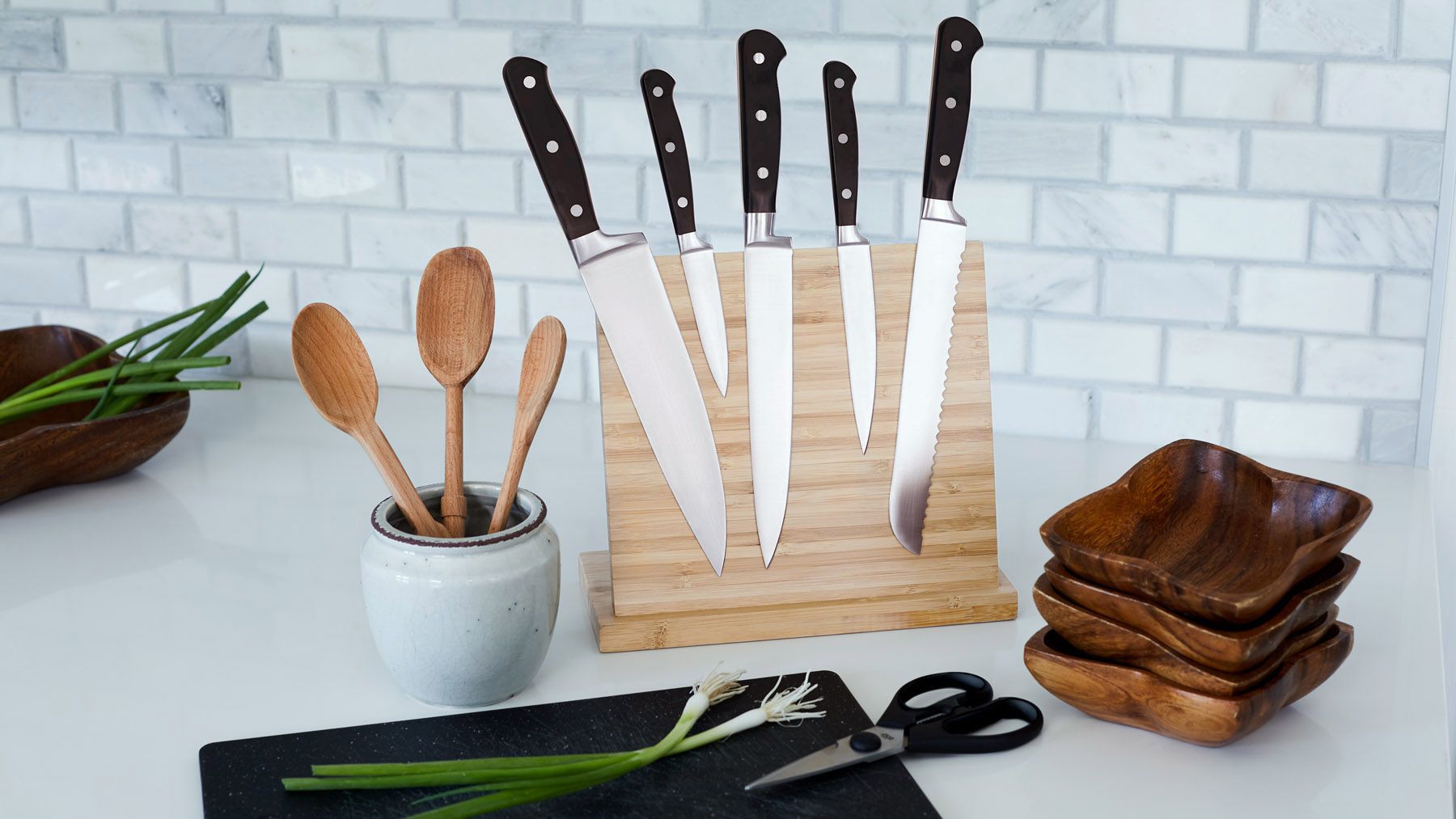
Credit: italic.com
The Importance Of Quality Knives In The Kitchen
When it comes to cooking, having the right tools is essential to create a successful dish. One of the most fundamental tools in any kitchen is a good set of knives. In this blog post, we will discuss the importance of quality knives in the kitchen and why investing in good knives is a smart decision.
The Role Of Knives In Cooking
Knives play a vital role in cooking as they are used to chop, slice, dice, and mince various ingredients. Whether it is chopping vegetables, dicing meat, or mincing herbs, a good knife makes the task more manageable and efficient. Knives also impact the presentation of the dish, ensuring that it looks appetizing and professional.
The Difference Between Quality Knives And Cheap Ones
The primary difference between quality knives and cheap ones lies in the materials used to make them. High-quality knives typically have a full tang, which means the blade runs through the handle to add durability and strength to the knife.
The blades are also made from high-carbon stainless steel, making them resistant to rust and able to hold a sharp edge longer than cheaper knives. Additionally, quality knives have a comfortable and ergonomic handle, making it easier to handle, minimizing the risk of slipping, or getting hand fatigue.
Cheap knives, on the other hand, are made from cheap materials, such as low-grade steel, plastic, or wood that can crack, rust, and dull faster. The handles often feel bulky and uncomfortable to hold, making it challenging to work efficiently for an extended period of time.
Why Investing In Good Knives Is A Smart Decision
Investing in quality knives is a smart decision for several reasons. Firstly, high-quality knives are safer to use as the blades maintain a sharp edge, ensuring that you won’t need to apply too much pressure to cut through ingredients, limiting the risk of accidents.
Secondly, quality knives are more durable, so they won’t need to be replaced as often as cheaper ones, saving you money in the long run. Lastly, a quality knife set can be an investment in your kitchen, and it can impact the way you cook, improve your skills, and potentially elevate your dishes to a whole new level.
The importance of quality knives in the kitchen cannot be overlooked. Investing in good knives is a smart decision, and understanding the difference between high-quality knives and cheaper ones will ensure that you can make a well-informed buying decision. Whether you’re a professional chef or a home cook, having the right set of knives is essential to achieve culinary success.
Types Of Knives Every Home Cook Needs
A good set of quality knives is essential for anyone who loves cooking. But with so many types of knives available in the market, it can be challenging to decide which ones to own. In this section, we will discuss the types of knives every home cook needs.
Chef’S Knife
A chef’s knife is perhaps the most important knife of all. It is a versatile knife that can be used for all sorts of tasks, including slicing, dicing, chopping, and mincing. Here are some key points about a chef’s knife:
- A typical chef’s knife has a blade length of 8 to 10 inches, but it can also be as long as 12 inches.
- The blade of a chef’s knife is curved, which makes it easy to rock back and forth while chopping.
- A good chef’s knife should be well-balanced and feel comfortable in your hand.
Paring Knife
A paring knife is a small knife primarily used for peeling and slicing small fruits and vegetables. It is also useful for intricate cutting work, such as removing seeds and creating garnishes. Here are some key points about a paring knife:
- A typical paring knife has a blade length of 2 to 4 inches.
- The blade of a paring knife is straight, making it easier to cut with precision.
- A good paring knife should be comfortable to hold and have a sharp blade.
Utility Knife
A utility knife is a multipurpose knife that can be used for various tasks, such as slicing meat, carving, and chopping vegetables. It’s a smaller version of a chef’s knife and can be considered a cross between a chef’s knife and a paring knife.
Here are some key points about a utility knife:
- A typical utility knife has a blade length of 4 to 7 inches.
- The blade of a utility knife is straight, which makes it ideal for tasks that require precision.
- A good utility knife should feel comfortable in your hand and have a sharp blade.
Bread Knife
A bread knife is a serrated knife that is designed to cut through bread without crushing it. The blade of a bread knife is long and serrated, which helps to saw through the crust of a loaf of bread. Here are some key points about a bread knife:
- A typical bread knife has a blade length of 7 to 10 inches.
- The blade of a bread knife is serrated, which helps it to cut through bread without crushing it.
- A good bread knife should have a sharp blade and be comfortable to handle.
Santoku Knife
A santoku knife is a multipurpose knife that originated in japan. It is similar to a chef’s knife but has a shorter blade and a different shape. Here are some key points about a santoku knife:
- A typical santoku knife has a blade length of 5 to 8 inches.
- The blade of a santoku knife is flat and doesn’t have a curved edge like a chef’s knife.
- A good santoku knife should be well-balanced and feel comfortable in your hand.
Serrated Knife
A serrated knife is a knife with a saw-like edge that is used for cutting soft foods, such as tomatoes or bread, without crushing them. Here are some key points about a serrated knife:
- A typical serrated knife has a blade length of 5 to 10 inches.
- The blade of a serrated knife is serrated, which helps it to cut through soft foods without crushing them.
- A good serrated knife should have a sharp blade and be comfortable to handle.
Owning a high-quality set of knives is essential for any home cook. By having the right types of knives in your arsenal, you’ll be able to tackle any recipe that comes your way. Remember to invest in well-balanced, comfortable knives with sharp blades, and you’ll be all set to create culinary delights in no time!
How To Choose The Best Knives For Your Needs
Factors To Consider When Purchasing Knives
Choosing the best kitchen knives may seem like a daunting task, given the vast array of options available in the market. However, with a little bit of knowledge and guidance, you can make the right decision.
Here are some of the critical factors to consider when purchasing kitchen knives:
- Blade material: A durable and high-quality blade material is incredibly important. Common blade materials for kitchen knives include carbon steel, stainless steel, and ceramic.
- Blade size: Knives come in all shapes and sizes. Think about what you’ll use each knife for and choose a size accordingly.
- Handle material: A comfortable and slip-resistant handle is essential. Popular materials for knife handles include wood, plastic, and metal.
- Purpose: Consider what tasks you’ll be using the knife for, whether it’s chopping vegetables, slicing steak, or something else altogether.
Popular Brands For Quality Kitchen Knives
Investing in quality kitchen knives can improve your cooking experience drastically. However, with so many brands on the market, it can be challenging to know where to start. Here are some popular brands known for their quality knives:
- Wüsthof: Founded in germany in 1814, wüsthof is a family-owned company that produces high-quality knives for both professional chefs and home cooks.
- Shun: A subsidiary of the kai group, shun knives are handcrafted in japan and renowned for their sharpness and precision.
- Global: Founded in japan in 1985, global is a well-known brand that produces lightweight and sharp knives.
- Zwilling j.a. Henckels: A german company that has been producing knives since 1731, zwilling j.a. Henckels is known for their high-quality stainless steel knives.
When choosing the best kitchen knives, it’s important to consider factors such as blade material, size, handle material, and your intended purpose. Additionally, investing in quality brands such as wüsthof, shun, global, and zwilling j. a. Henckels can result in a more enjoyable cooking experience.
Remember, a sharp and efficient knife is an essential tool in any kitchen.
Caring For Your Knives
The way you maintain and care for your kitchen knives is vital for their longevity, effectiveness, and safety. Proper knife care involves specific practices that you should follow. Here are some essential tips on how to care for your knives and ensure they perform at their optimal level.
Proper Knife Storage
Proper knife storage will help keep the blades safe and in pristine condition. Here are some ways to store your knives properly:
- Store knives in a block or on a magnetic strip.
- Place knives on a magnetic strip in such a way that the blade’s sharp edge is not in contact with the strip, to avoid dulling.
- Get a knife roll or a sheath if you plan to carry knives around.
- Always store knives in a dry place to avoid rusting.
- Store knives away from other kitchen tools to avoid causing any scratches or dents.
How To Sharpen Your Knives
Sharpening your knives is essential because it will help keep the blade’s edge sharp and efficient. Here are some tips on how to sharpen your kitchen knives:
- Use a sharpening stone or an electric sharpener to sharpen knives.
- Hold the knife carefully, and maintain the angle between the blade and the stone.
- Start with the rough grit side of the stone and progress to the fine grit side.
- If you have an electric sharpener, follow the instructions on how to use it.
- Always sharpen your knives before they become too dull, and maintain a consistent angle.
Honing Vs. Sharpening
Honing and sharpening are essential for maintaining knife blades, but they are not the same thing. Honing realigns the blade’s edges, while sharpening removes material from the edge. Here are some points in honing vs. sharpening:
- Honing should be done frequently to maintain the blade’s edge.
- Sharpening should be done only when your blade is dull and beyond honing.
- Honing is best done with honing steel in just a few seconds.
- Sharpening will take off some of the blade material, and it’s a more involved process.
- Honing helps maintain the edge, while sharpening helps to restore the edge.
Maintenance And Cleaning Tips
In addition to proper storage, sharpening and honing, knives should be thoroughly cleaned to maintain their performance and prevent any contamination. Here are some tips on how to clean and maintain your kitchen knives:
- Always clean knives after use and before storage.
- Use warm soapy water, and dry the knives immediately after cleaning.
- Avoid using abrasive materials like steel wool or scrubbing pads that can scratch the blade.
- Do not soak knives in water for prolonged periods of time, as it can lead to rusting.
- Regularly oil the blades to prevent rust and maintain their appearance and sharpness.
Properly maintaining and caring for your kitchen knives is essential to ensure they last a long time and remain effective and safe to use. Following these simple tips is an excellent way to care for your knives. Keep them sharp, clean, and well-maintained to ensure they are ever-ready for all culinary adventures.
Frequently Asked Questions Of What Are The Best Kitchen Knives
What Are The Must-Have Knives For A Home Cook?
A home cook must have a chef’s knife, serrated knife, and paring knife in their kitchen. A chef’s knife is versatile, a serrated knife is good for bread and tough-skin fruits, and a paring knife is perfect for small tasks like peeling and coring.
How Often Should Kitchen Knives Be Sharpened?
Kitchen knives should be sharpened once every three months for home cooks. However, if you use your knives more frequently, you may need to sharpen them more. Dull knives make it challenging to cut through meat, vegetables, and fruits, so regular sharpening is crucial.
What Type Of Knife Is Best For Chopping Vegetables?
A santoku knife is perfect for chopping vegetables as it has a short, wide blade, and it can easily chop through vegetables with ease. Additionally, a chef’s knife is also a good option for chopping vegetables as it has a broad blade that is ideal for a wide variety of tasks.
Should I Buy Knives Individually Or As A Set?
It’s better to buy knives individually than in a set. You can choose the knives that you will use frequently rather than paying for knives that you’ll never use. Also, high-quality individual knives tend to be better than those in a set.
What Should I Look For When Buying Kitchen Knives?
When selecting kitchen knives, consider the blade material, the weight and balance of the knife, and the handle. A good handle should provide a comfortable grip, and the weight and balance of the knife should feel right in your hand.
The blade should be sharp, durable, and made of high-quality materials.
Conclusion
After much research and consideration, we have uncovered the best kitchen knives for any home cook. From the multi-purpose chef’s knife to the precise paring knife, a good set of knives can make all the difference in your culinary creations.
The quality and durability of the materials used in these knives ensure that they can last you for years to come. While choosing the right knife can be a personal decision, we have provided you with a range of options that cater to different needs and preferences.
Remember, investing in a good set of knives is an investment in your cooking skills and the overall enjoyment of your time in the kitchen. So, go ahead and choose the knife set that best suits your needs and start cooking up a storm!


